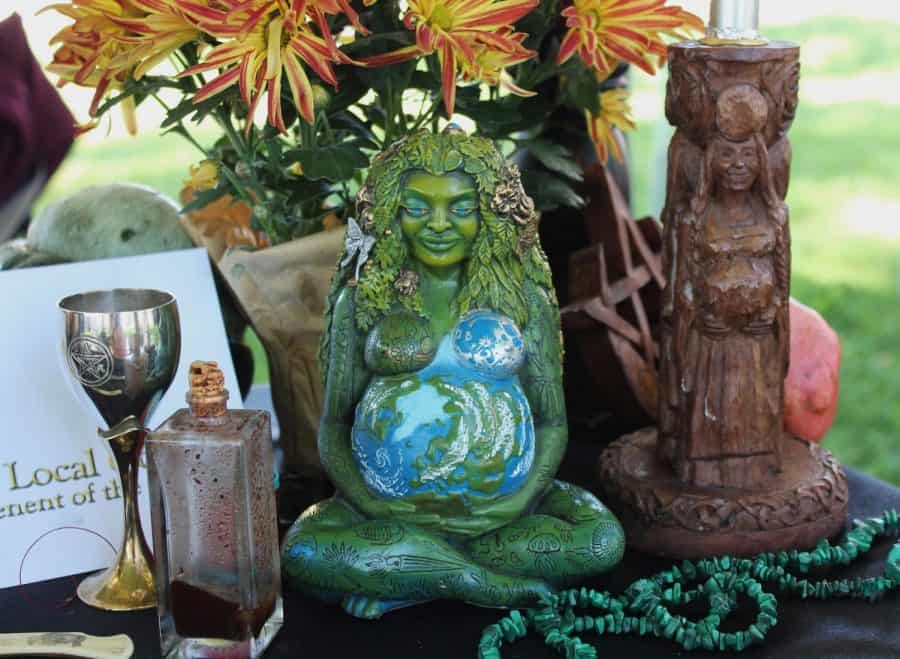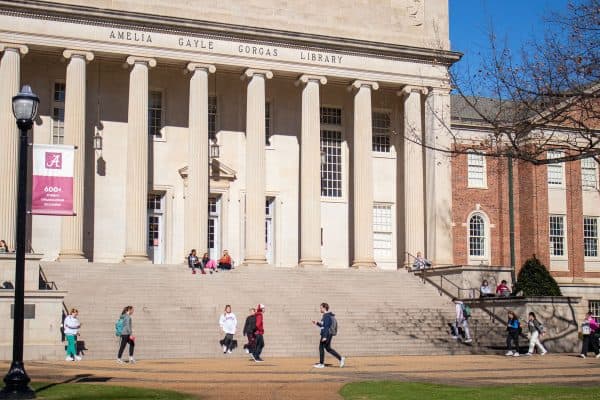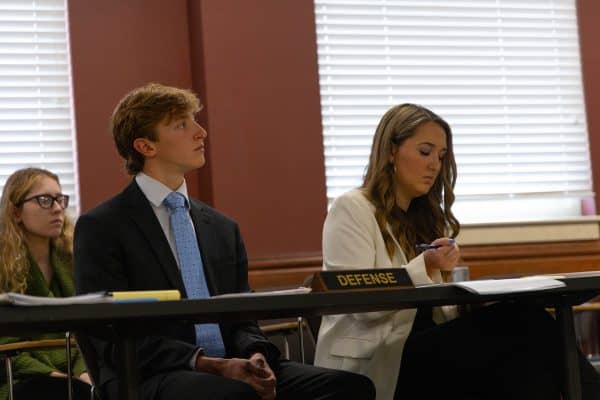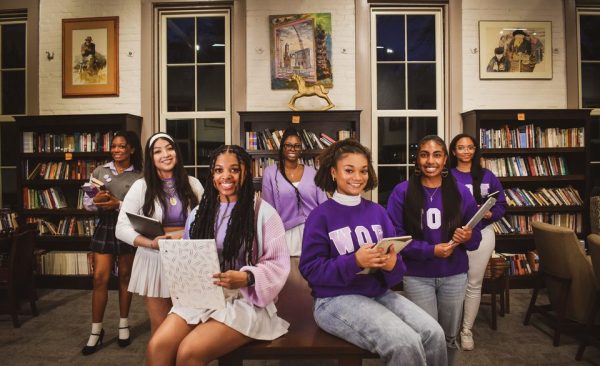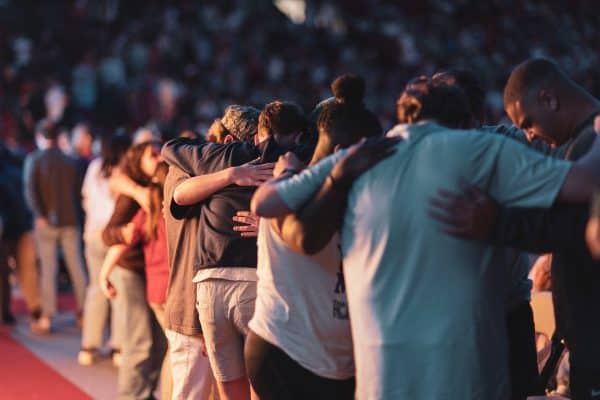Arts and Sciences students pursue supernatural studies
October 28, 2019
On Oct. 31, kids and adults alike will dress as devils, ghosts and witches to celebrate a night of fun and frights. But Halloween is more than just a holiday in the College of Arts and Sciences, where students are dedicating their studies to the history and anthropology of myth and magic.
To many people, Halloween is nothing more than a yearly celebration of pretend and make-believe.
Costumes are false faces, and seasonal rituals like visiting haunted houses and watching horror movies are a distraction from the routine of everyday life. On Nov. 1, the masks come off and decorations come down, because the fear was all manufactured.
For some University of Alabama students, however, the history and symbolism of Halloween extends beyond parties and pumpkin patches, into the classroom. Randy Arnold, a master’s student studying cognitive anthropology, has devoted both his undergraduate and graduate careers to examining mythic and religious narratives in culture.
“The origin of Halloween is Samhain,” Arnold said. “It’s a Celtic holiday.”
Samhain was a Pagan holiday in ancient Celtic culture that began at sunset on Oct. 31 and lasted through the evening of Nov. 1. Historically, Paganism is a term used to describe the following of pre-Christian, traditionally polytheistic and nature-centered religions.
Arnold said Samhain marked a liminal stage, or transitional period, in between summer and winter, which symbolize life and death, respectively. During that stage, people believed spirits appeared, some of which were thought to be mischievous.
Arnold said that in the seventh century, Catholicism came into competition with the Celtic culture. Instead of denouncing the Samhain, Pope Boniface IV overlayed Christian ideas by declaring Nov. 1 All Saint’s Day to celebrate saints and martyrs. As a result, Pagan elements of Samhain turned into a mockery.
“[The Catholic Church] still [has] these Pagan ideas and Pagan rituals,” Arnold said. “So what’s the best way to defeat ideas that you don’t agree with? You don’t say they’re bad. They’re not bad. They’re not horrible. They’re not banished. You make fun of them.”
After hundreds of years, those Pagan concepts of spirits and magic are widely presented as pure fiction in American popular culture. Both ideas are heavily commercialized as a means of entertainment, especially during October.
However, Arnold said through his studies he has developed a stronger appreciation for diverse belief systems and a greater understanding of how traditions like Halloween change over time.
“I find it very beautiful and very moving to celebrate the spirit of your ancestors,” Arnold said. “Now, I can’t get into what people think is real and what people believe is metaphor because I think, for people in general, sometimes those lines get blurred. And I think it’s very beautiful that they get blurred.”
The Department of Anthropology is just one of several divisions of the College of Arts and Sciences that encourages students to explore the concepts of magic and ritual. Giuliana LaMarca, a junior majoring in history, chose to examine witchcraft in early modern Europe for her undergraduate research seminar.
“I’ve always been fascinated with the supernatural,” LaMarca said. “I had a general background in studying witchcraft, but going in depth like this is something I never would have done without this class, and it’s so entertaining to me.”
One of the dozens of sources she has accumulated is “The Malleus Maleficarum,” which is a sort of guide to identifying and trying witches, originally published in the 15th century.
LaMarca said women accused of being witches in early modern Europe were believed to have sold their souls to the devil. Witches were blamed for misfortunes like crop failure or infertility, as people didn’t yet understand the scientific causes.
“At that time people thought women were weak-minded and couldn’t resist temptation, and the devil is a very tempting figure in history and religion,” LaMarca said. “So it was as though these women were so weak that they were much more susceptible to the devil’s influence.”
While LaMarca has delved deeply into the religious context behind witch hysteria in England and colonial America, she said it is difficult to pinpoint an exact time when that hysteria definitively originated or ended. In fact, some believe stigma and misconceptions surrounding witchcraft are still present in the United States.
Emi Smith, a graduate student studying biocultural anthropology, said there is still a disconnect between how most people view Paganism and witchcraft and what they actually are. Her academic focus is on witchcraft and stigma in the Deep South.
“Personally, I’ve always been Pagan,” Smith said. “But growing up here, I didn’t know it was an option. It’s definitely a big risk. We live in this little university bubble where it’s OK and people are pretty accepted, but when you get out in rural Alabama, it is not okay to label yourself as a Pagan. And there’s a lot of people who live in fear.”
However, Smith said Paganism and witchcraft are actually growing movements in the country at the moment, even in cities in Alabama like Birmingham and Huntsville. While witches are Pagan, not all Pagans identify as Wicca or practicing witches, which are similar but not synonymous.
Smith said people are often drawn to Wicca because it is nature-centered and recognizes both male and female gods, and there are many individual paths within the religion.
“They call [Wicca] a religion without converts,” Smith said. “You don’t have to conform to a certain way of being.”
Currently, Smith is working to find a professor to teach an anthropology course entitled, “Myth, Ritual, and Magic,” which hasn’t been offered at the University since its previous professors retired.
Smith, LaMarca and Arnold each expressed how thankful they are for the programs and courses that have not only allowed, but encouraged and cultivated their interests in the supernatural.
“I feel very fortunate that there’s a place that allows you to explore your deep passions,” Arnold said.

